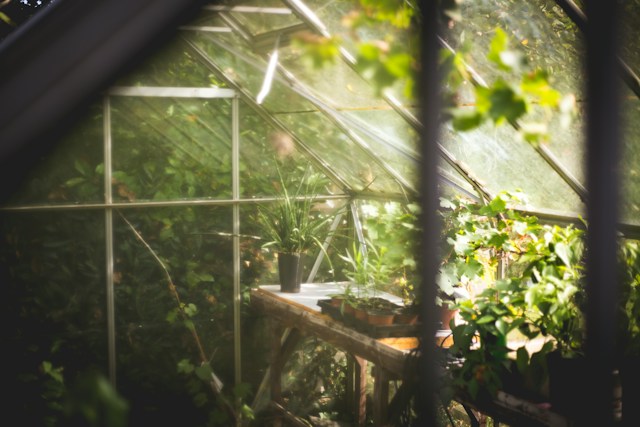

· By Brooke Hamilton-Benjestorf
Mediterranean Secret Garden
Poppies swaying before the sages, deep golden yellow yarrow and coyote mint (like little lipsticks) interspersed between tufts of cheerful fescue and ground-creeping ceanothus. A modest stand of fig trees, brought to California in the 1700’s by Franciscan missionaries, shades a rusting chair and an apple core. Across the pink sand path, shrubs of rosemary and lavender, brought by colonists in the 1600’s, stir with the pounce of a whiskered hunter. And, there, peeking from behind a mosaic of rocks are our grizzlier friends. Dependable prickly pear, coast cholla with her snaky tentacles, and coast barrel cactus, round and inviting but for her long, lethal pricks. The bounty that thrives in a Mediterranean climate is the envy of gardeners in colder states everywhere. It is so doable, so rewarding, to plant a native / drought-friendly garden in coastal Northern California, that it’s a missed opportunity not to. Here are some reasons and tips for growing your own Mediterranean secret garden.
Using native plants in our gardens is a way to say thank you to the land that holds us. While non-native species (particularly invasive ones) tend to homogenize the landscape and make it weaker, native species restore variety and strength in the land [1]. And while you conserve water, you also create habitats for native wildlife and insects, further raising the health of the land by contributing to the strength of your local ecosystem. For a harmonious, natural garden design, go out into nature and observe the way plants group together so that you can later apply their patterns to your own outdoor space. Take your time, and plant slowly over seasons and years. Let your garden lead you - it holds far more plant wisdom than you do. When we thoughtfully observe the way our gardens grow, it’s easier to determine what makes sense in further planning and pruning. What if you turned your gardening ritual into a protest to instant gratification?
Visiting local native gardens in the community is another inspiring way to guide your planting. Some lovely grounds to visit in and around Napa Valley are the Martha Walker Garden, the gardens at the di Rosa Center for Contemporary Art, and Frog’s Leap Vineyard. I’m a big fan of a YouTube garden tour, and I stumbled upon this virtual visit to Rebecca Sweet’s drought-tolerant, Northern California grounds, which is full of helpful tips. Because Rebecca’s garden is only a few years old, it gives a good visual guide to spacing and grouping. She’s also strategic about placing her thirstier plants at the bottom of a slope, where they can gather their sustenance from runoff, rather than requiring additional irrigation. She even discusses the way in which she experiments with plants that are labeled as requiring moderate amounts of moisture, and finding that they often do beautifully on a drought-friendly water budget.
There is so much inspiration to be had in Napa County. Choosing to spend a day off exploring and touring the stunning horticulture of the area is sure to serve your soul and your garden. As ever, slow down and discover the beauty that already exists around and inside you.
[1] https://www.wildflower.org/learn/guide-native-plant-gardening
Photo by Thomas Verbruggen on Unsplash